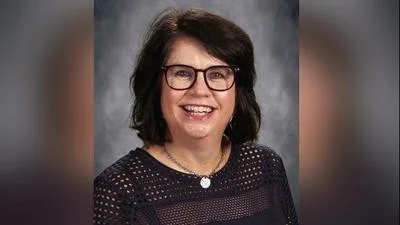Kyle Klier, Superintendent at Robinson Community Unit School District 2 | https://www.robinsonschools.com/
Kyle Klier, Superintendent at Robinson Community Unit School District 2 | https://www.robinsonschools.com/
Under Illinois law, districts may only borrow up to a certain limit based on their Equalized Assessed Value (EAV)—a standardized measure of taxable property used to determine legal debt caps.
Based on the school district's enrollment of 1,857 students, the countywide debt translates to approximately $8,319 per student as of fiscal year 2024.
The county includes two school districts, of which Robinson Community Unit School District 2 held the most debt, totaling $15 million.
Robinson Community Unit School District 2 ranked 223rd statewide among all 851 Illinois districts reporting outstanding debt.
Among the school districts in Crawford County, Robinson Community Unit School District 2 used the highest percentage of its EAV-based debt limit at 3.6%, holding $15 million in outstanding debt with 1,519 students enrolled—approximately $9,856 per student. Palestine Community Unit School District 3 ranked second, using 1% of its borrowing capacity with $478,000 in long-term debt and an enrollment of 338— $1,414 per student.
Countywide, students identifying as white comprised the largest ethnic group in Crawford County schools, accounting for 135.4% of the total enrollment. The second-largest ethnic group was multiracial, comprising 4.2% of the student body.
The data was obtained by Wirepoints through a Freedom of Information Act request to the Illinois State Board of Education.
Illinois has enacted a law that changes the amount of debt school districts can issue. According to an analysis by Chapman, the new rules permit school districts to borrow more money than previously allowed. At the same time, the law modifies limits on property tax extensions that fund this debt. As a result, if districts take on more debt, local property taxes could increase to cover the additional costs.
The Illinois State Board of Education’s budget for fiscal year 2026 will increase from nearly $10.8 billion to about $11.2 billion. This includes a $307 million boost for K–12 schools, marking the smallest annual increase since 2020.
The agency has paused about $50 million in funding previously allocated through the Evidence-Based Funding formula for the Property Tax Relief Grant while reviewing its impact on local tax relief. Officials say the pause could affect the timing and amount of property tax relief available to taxpayers.
The annual reporting aims to increase transparency and accountability around school debt. Future reports will include 15 years of historical data, allowing residents to track long-term financial trends.
Outstanding School Debt by School District in Crawford County, FY 2024
| County Rank | State Rank | School District | Outstanding Debt | Percentage of Debt Limit Used | Percentage of EAV Used | Enrollment |
|---|---|---|---|---|---|---|
| 1 | 223 | Robinson Community Unit School District 2 | $14,971,102 | 26% | 3.6% | 1,519 |
| 2 | 686 | Palestine Community Unit School District 3 | $478,000 | 7% | 1% | 338 |






 Alerts Sign-up
Alerts Sign-up